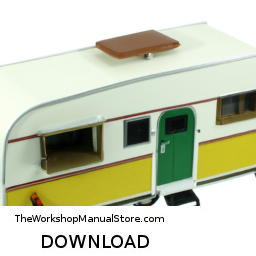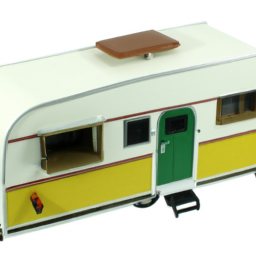
Replacing the oxygen sensor on a Dodge Caravan requires some basic tools and knowledge of automotive systems. Access and review the manual details here…..
- Top 5 Problems Dodge Grand Caravan Minivan 5th Generation 2008-20 Buy Now! New Brake Pad & Rotor Kit from 1AAuto.com http://1aau.to/ia/1APBS00210 What are the Dodge Grand Caravan Top …
- Dodge G Caravan Noggle Installation – Air Conditioning For Your Kids In Car Seats Keep the temperature just right in your Dodge G Caravan with The Noggle car air-conditioning attachment! Specially tailored for …
Below are detailed steps for performing this task, including descriptions of the tools needed.
### Tools and Equipment Needed
– **Oxygen Sensor Socket**: A specialized socket designed to fit over the oxygen sensor, allowing you to remove it without damaging the wire harness. It typically has a slit to accommodate the sensor’s wire.
– **Ratchet and Extension**: A ratchet is used to turn the oxygen sensor socket, and an extension may be necessary to reach sensors that are positioned deeper within the engine bay.
– **Wrench Set**: Open-end or box-end wrenches can be used to tighten or loosen the sensor if you don’t have an oxygen sensor socket.
– **Pliers**: Needle-nose pliers can help with disconnecting the electrical connector from the oxygen sensor.
– **Brake Cleaner or Degreaser**: Use this to clean the area around the sensor before removal to prevent dirt from entering the exhaust system.
– **Shop Towels/Rags**: These are useful for cleaning up and preventing debris from contaminating the sensor area.
– **Safety Glasses and Gloves**: Always wear safety gear to protect your eyes and hands while working on your vehicle.
### Steps to Replace the Oxygen Sensor
– **Preparation**:
– Park the Dodge Caravan on a level surface and engage the parking brake.
– Allow the engine to cool down completely to avoid burns.
– **Locate the Oxygen Sensor**:
– Identify the location of the oxygen sensor. In most Dodge Caravan models, there are typically two types: upstream (pre-catalytic converter) and downstream (post-catalytic converter). Both can usually be found on the exhaust manifold or the exhaust pipe.
– **Disconnect the Battery**:
– For safety, disconnect the negative battery terminal using a wrench to prevent any electrical shorts while working on the sensor.
– **Clean the Area Around the Sensor**:
– Use brake cleaner or degreaser to clean the area surrounding the oxygen sensor. This prevents any dirt or debris from entering the exhaust system when removing the sensor.
– **Disconnect the Electrical Connector**:
– Locate the electrical connector attached to the oxygen sensor. Use needle-nose pliers to gently squeeze and disconnect the harness from the sensor.
– **Remove the Old Oxygen Sensor**:
– Using an oxygen sensor socket, attach it to the sensor. If access is limited, use a ratchet and extension.
– Turn the socket counterclockwise to unscrew and remove the old sensor. If it’s stuck, you might need to apply penetrating oil and let it sit for a while before attempting to remove it again.
– **Prepare the New Oxygen Sensor**:
– Before installing the new sensor, check the threads and ensure they are clean. Apply a small amount of anti-seize compound to the threads of the new oxygen sensor to aid in future removal (do not apply it to the sensor tip).
– **Install the New Oxygen Sensor**:
– Screw the new oxygen sensor into the exhaust pipe or manifold by hand to avoid cross-threading. Once it’s hand-tight, use the oxygen sensor socket and ratchet to tighten it further, but do not overtighten.
– **Reconnect the Electrical Connector**:
– Attach the electrical connector back to the new oxygen sensor until you hear a click, indicating it is securely in place.
– **Reconnect the Battery**:
– Reattach the negative battery terminal and tighten it with a wrench.
and tighten it with a wrench.
– **Start the Engine and check for Leaks**:
– Start the engine and allow it to reach operating temperature. check around the sensor for any exhaust leaks and listen for unusual sounds.
– **Clear Any Fault Codes (if applicable)**:
– If the check engine light was on, use an OBD-II scanner to clear any stored fault codes. This may reset the light if it was triggered by the old sensor.
– **Test Drive**:
– Take the Caravan for a test drive to ensure everything is functioning properly. Monitor the vehicle’s performance and check for any warning lights.
By following these steps carefully, you can successfully replace the oxygen sensor on a Dodge Caravan. Remember to work Safely and consult your vehicle’s manual for any specific instructions related to your particular model year.
The clutch disc, also known as the clutch plate, is a crucial component of a vehicle’s manual transmission system. It plays a vital role in the engagement and disengagement of the engine and the drivetrain, allowing the driver to change gears smoothly and efficiently. The clutch disc is located between the pressure plate and the flywheel, acting as a friction surface that connects the engine’s power to the transmission.
Typically made from a combination of materials, the clutch disc features a friction material on its surface, which provides the necessary grip to transmit torque from the engine to the wheels when engaged. The design of the clutch disc includes a central hub that allows it to rotate freely while also engaging with the input shaft of the transmission. This hub is equipped with splines that facilitate the connection to the gearbox.
When the driver presses the clutch pedal, the pressure plate releases the clutch disc from the flywheel, interrupting the flow of power and allowing for gear changes without damaging the transmission. The quality and condition of the clutch disc are essential for optimal performance; worn or damaged discs can lead to slippage, difficulty in shifting gears, and increased wear on other transmission components. Regular maintenance and timely replacement of the clutch disc are vital for ensuring the reliability and efficiency of a vehicle’s transmission system.